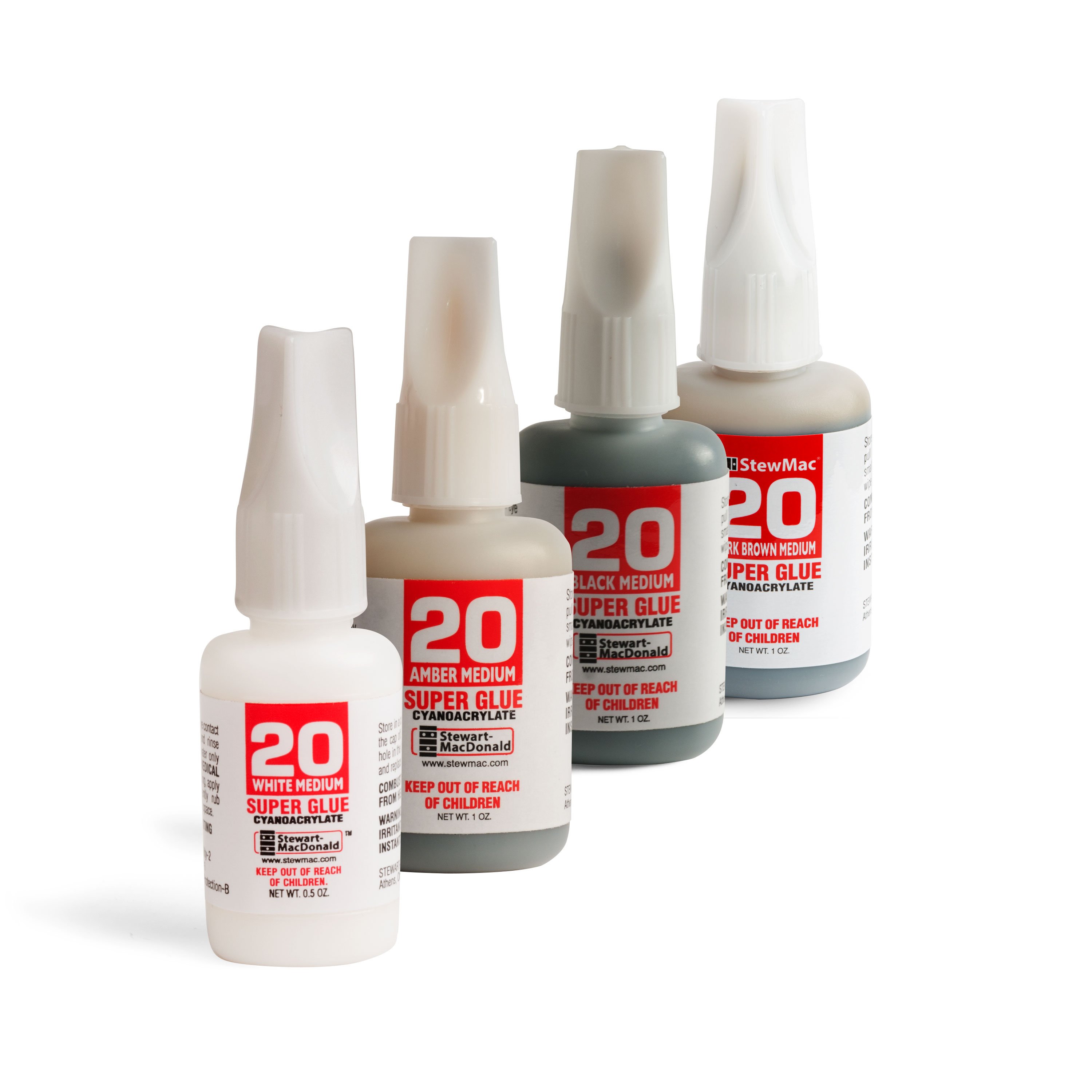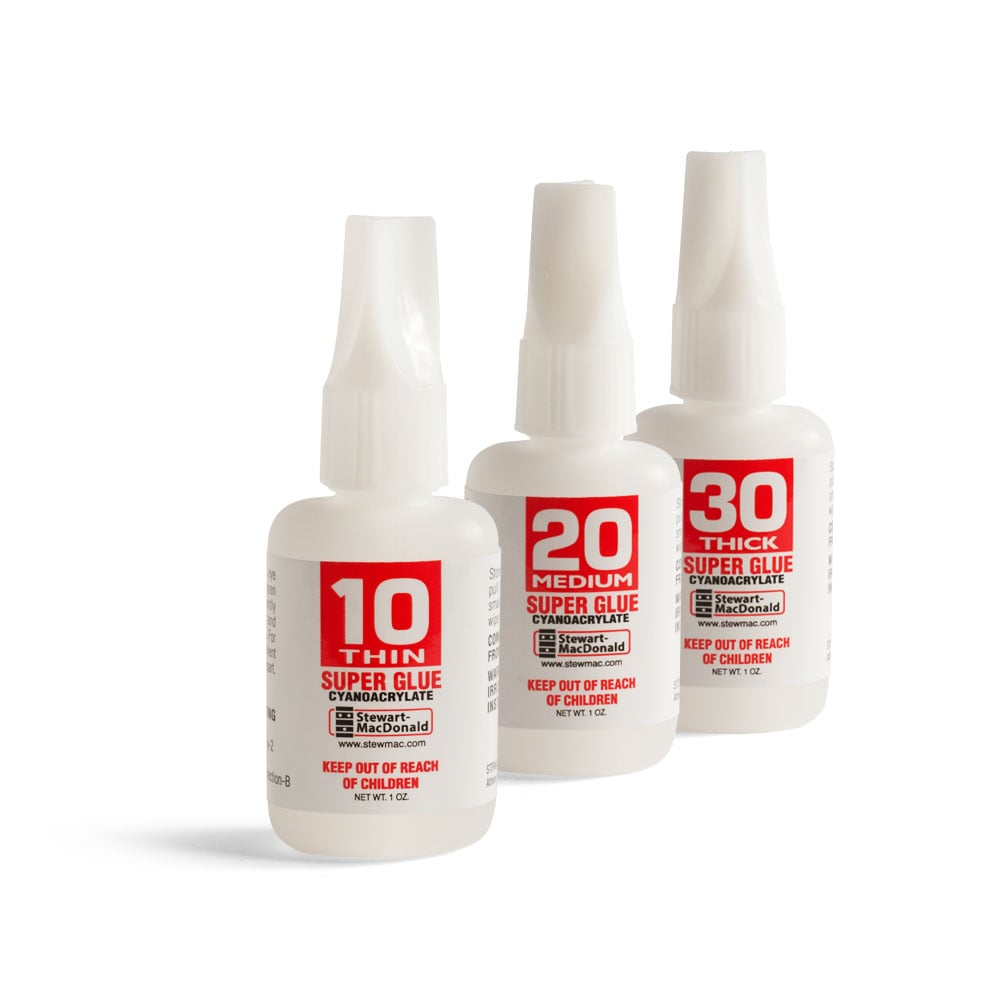Which super glue to use: thin, medium or thick?
When I first tried super glue back in the 1970s, I didn’t have much luck: that little tube of grocery-store glue was too thin for the job I tried it on. Now we have more glue options, so here's a guide to picking the right glue for the situation. These examples will give you a feel for when to use thin, medium, or thick: The thin stuff penetrates deep into small cracks, making some repairs possible that couldn’t be done without it. The key idea here is “wicking,” or capillary action: the #10 glue pulls itself into tight places. Use it on two surfaces that are already pressed together. #10 glue applied to the edge of a fret immediately wicks under the fret and into the slot, holding that fret down tight. If there's any excess glue, scrape it away with a single-edged razor blade. When I refret an old, worn fingerboard I’m likely to find some chips knocked out along the edges of the fret slots. I fill these little potholes with sawdust (with luck, I’ll have matching dust left over from sanding the very same fingerboard). I fill the slot with a piece of plastic (the plastic tag from a bag of bread works well), pack the sawdust into the holes, then add a drop of #10 glue. The effect is instant: the glue wicks into the dust and makes solid, matching fill. In seconds, it’s ready to file, scrape, or sand. I use #20 medium the most. It's for jobs like binding repairs, gluing on a peghead overlay, and drop-fill finish repairs on level surfaces. (The list goes on and on...) Medium viscosity plays a role in fretwork, too. For example, if the fret slot’s chipped but the pieces are still attached, I run #20 along the chips, then I smoosh them down and burnish them by rubbing over them using wax paper. When wax paper isn't handy, the bottom of the super glue bottle is my burnisher. Super glue won't stick to that, either! I smooth the chips with my fine-grit nut-shaping file held at almost a right angle to the work. I use #30 thick when I need the glue to stay right where I put it, and cure without running or sagging. #30 is perfect for lightly gluing in a nut. Three small drops clinging to the front wall of the nut slot (the fingerboard end) are more than enough, and they won't run down into the slot before you can position the nut. For drop-filling deep finish chips, dents, and dings I use #30; its heavy body lets me place the glue where I need it using a plastic drop-fill toothpick. I can move #30 glue around with the tip of toothpick before it starts to set. Pigmented black super glue blends into black binding or ebony. It was useful for this bridge repair on a 1970s Martin D-35: the saddle was too far forward, so the guitar’s intonation was sharp. I filled the slot by gluing a piece of ebony using #20 black super glue. The result is a near-invisible fill enabling me to cut a new saddle slot in the proper location (marked here with yellow pencil). On the opposite end of the spectrum, I use white super glue for gluing white to white — bindings, for example. The white glue line is less visible in these cases, and doesn’t allow the dark underlying materials to show through the way clear glue would. The late great Stevie Ray Vaughan gave me this tip: broken skin on your fingertip can be fixed with #20 super glue. Just a drop will hold the cut closed!
3 viscosities because one glue can’t do everything
#10 Thin Super Glue
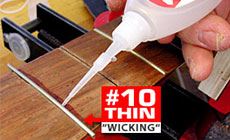
Useful for fretwork

Sawdust fill:

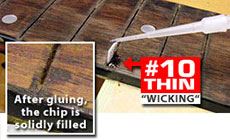
#20 Medium Super Glue
Gluing chips:



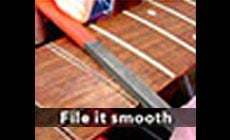
#30 Thick Super Glue

Gluing a nut:
Drop fill:
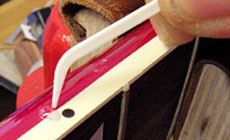
Black & White Super Glue



Hot Tip for fingertips





